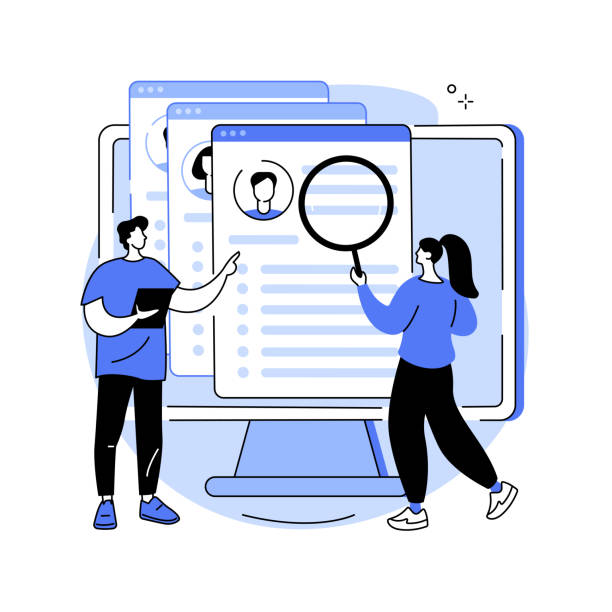Introduction to SEO-Optimized Website Design and its Importance

In today’s #digital world, an online presence is vital for any business, but simply having a website is not enough.
SEO-optimized website design is no longer a luxury option, but a strategic necessity.
This approach means building a website that is not only attractive and user-friendly for visitors but also easily found and ranked by search engines like Google.
The main goal of search engine optimization (SEO) is to increase visibility and attract organic (unpaid) traffic.
Why is this so important? Because the vast majority of users never go beyond the first page of search results.
Therefore, if your website does not appear on the top pages, it will effectively remain invisible to your target audience.
This is an explanatory and educational topic for understanding the basic importance of SEO in web design.
A website that adheres to SEO principles can continuously attract visitors without the need for expensive paid advertisements.
This long-term investment will yield significant returns and greatly assist in building an SEO-centric site.
From the very first steps of design, SEO should be considered to prevent future problems.
#Optimization #SEO #Website #Organic_Traffic
Did you know that 94% of a company’s first impression is related to its website design?
Rasaweb helps you create the best first impression by offering professional corporate website design services.
✅ Create a professional and trustworthy image for your brand
✅ Easier attraction of potential customers and improvement of online presence
⚡ Get a free consultation for corporate website design
Key SEO Factors in Website Design
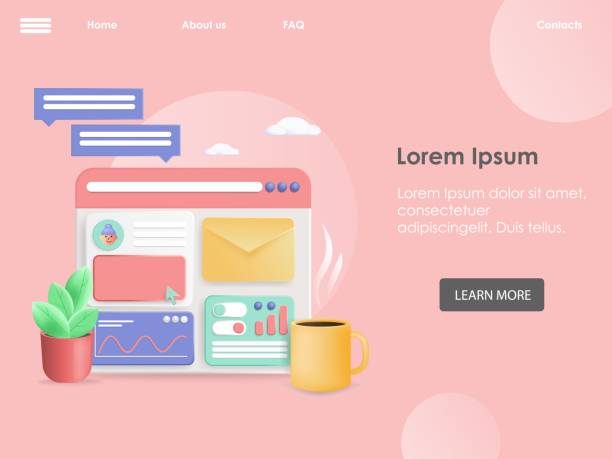
To have an SEO-optimized website design, special attention must be paid to several key factors.
These factors can be divided into three main categories: technical SEO, on-page SEO (content SEO), and off-page SEO.
In the technical SEO section, site loading speed is of paramount importance.
Both search engines and users prefer high-speed websites.
Website speed optimization not only improves user experience but also directly impacts SEO ranking.
Mobile-friendliness is another critical factor; given the increasing use of smartphones for internet access, Google prioritizes websites that display correctly on mobile devices.
This is specialized guidance for every webmaster.
In the on-page SEO section, the quality and relevance of content to target keywords are very important.
Unique, informative, and engaging content not only attracts users but also encourages search engines to display it.
Strategic use of keywords, titles, meta descriptions, and URL structure also falls into this category.
Off-page SEO includes activities outside the site, such as quality link-building from reputable websites, which increases your site’s credibility.
These three main pillars significantly boost your website’s potential for visibility and contribute to the improvement of website design with an SEO approach.
Technical Aspects of SEO-Optimized Website Design
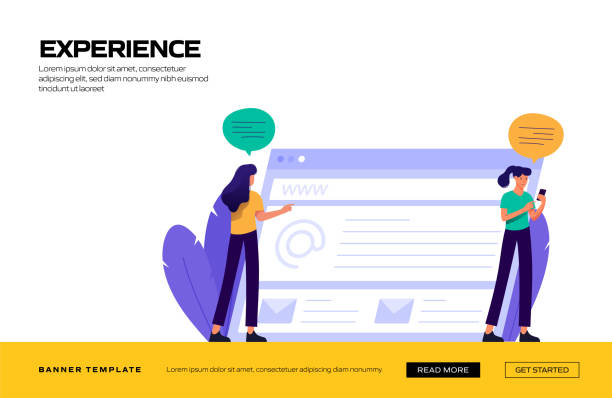
SEO-optimized website design requires meticulous attention to technical aspects that are often overlooked.
These aspects directly affect how search engines crawl, index, and rank your site.
One of the most important is URL structure and site hierarchy.
Short, descriptive, and keyword-rich URLs are better for users and search engines.
A logical site structure also helps Google bots easily navigate between pages and find your content.
Structured data (Schema Markup) is also a specialized tool that helps search engines better understand your content and display it more richly in search results (such as product rating stars or contact information).
This is a crucial analytical step in improving your site’s display.
Using an SSL certificate (HTTPS) not only enhances site security but is also considered a minor ranking factor by Google.
Controlling 404 errors, correct 301 redirects for moved pages, and optimizing robots.txt files and XML sitemaps are other technical requirements.
Adhering to these tips helps your website appear more trustworthy and authoritative in the eyes of search engines.
These fundamental principles provide the necessary infrastructure for a truly SEO-optimized website design.
Table 1: Key Technical SEO Factors in Website Design
Content Strategy and its Role in SEO-Centric Design

Content is the heart of every SEO-optimized website design.
A website without high-quality and relevant content, regardless of strong technical techniques, cannot achieve a good ranking in search results.
The first step in content strategy is comprehensive keyword research.
This process involves identifying phrases that your target audience uses to search for products, services, or information related to your business.
This is a very important educational section.
Your content should naturally and user-friendly incorporate these keywords, without resorting to “Keyword Stuffing,” which is penalized by Google.
Producing valuable, unique, and long-form content (usually over 1000 words for blog articles) that answers users’ questions and meets their needs is of high importance.
This is not only beneficial for SEO but also increases user engagement.
Your content can include blog articles, service pages, product descriptions, videos, infographics, and any other format that provides useful information.
Regularly updating old content and adding new content sends a positive signal to search engines that your site is active and relevant.
This approach helps you have a search engine optimized website that is constantly growing and improving.
Content strategy should be incorporated from the beginning into SEO-optimized website design, rather than being considered a separate section.
Did you know that a poor corporate website loses many opportunities for you daily? Solve this problem permanently with professional corporate website design by Rasaweb!
✅ Create a powerful and trustworthy image for your brand
✅ Targeted attraction of new customers and increased sales
⚡ [Get free website design consultation]
User Experience (UX) and its Impact on SEO

In the past, SEO was more focused on technical factors, but today, User Experience (UX) has become one of the critical factors in SEO-optimized website design.
Google and other search engines are increasingly paying attention to user behavioral signals such as Bounce Rate, Dwell Time, and Click-Through Rate (CTR) from search results.
Good UX ensures that users stay on your site longer, visit more pages, and are likely to convert into customers.
These signals indicate to Google that your content is valuable to users, which can improve your SEO ranking.
Attractive visual design, easy navigation, clear Call-to-Action buttons, and responsiveness (compatibility with different screen sizes) are all elements that contribute to improving UX.
Is your website easy to navigate? Can users quickly find what they are looking for? These are thought-provoking content questions you should ask yourself when designing an SEO-optimized website.
A poor user experience can lead to a high bounce rate and low dwell time, which are considered negative signals for SEO.
Therefore, investing in UX improvement is not only beneficial for your users but also a direct investment in your site’s SEO.
This is a deep analysis of the relationship between these two areas.
The Importance of Site Architecture and Internal Link Structure
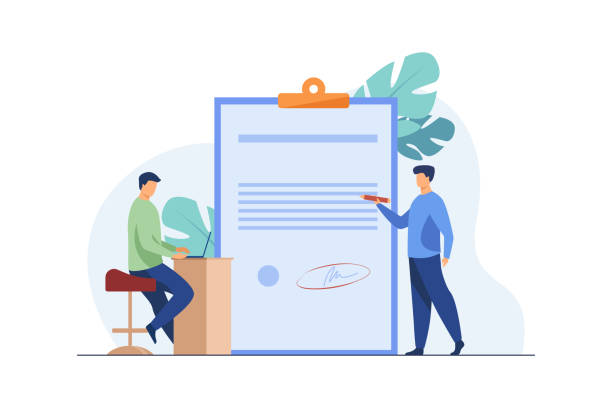
Website architecture, which includes how pages are organized and connected to each other through internal links, plays a vital role in SEO-optimized website design.
A logical and hierarchical site structure not only helps users easily navigate your site but also facilitates search engines’ understanding of the site’s content and various pages.
This means that main pages should be accessible and related pages should be connected to each other via internal links.
This is specialized guidance for content organization.
Internal links distribute SEO power throughout your site and give credibility to deeper pages (which might be visited less frequently).
Using relevant and descriptive Anchor Texts in internal links is also very important, as it sends signals to search engines about the content of the linked page.
For example, instead of “Click here,” use “Comprehensive guide to website design.”
A “Deep but Flat” site architecture is ideal; meaning users and search engine crawlers can access any page with a maximum of 3 or 4 clicks.
This significantly helps improve page indexing and ranking.
If important pages of your site are difficult to access, the likelihood of them being found and indexed by search engines decreases.
Therefore, in the process of SEO-optimized website design, always pay close attention to the internal link structure and overall site architecture to ensure that all your valuable content is accessible and discoverable.
This approach means building an SEO-centric site from the ground up.
Tools and Resources for Evaluating and Improving Website SEO

After implementing an SEO-optimized website design, the next stage is continuous evaluation and improvement.
Fortunately, numerous tools and resources are available to assist you on this path.
Google Search Console (GSC) is a free and essential tool from Google that allows you to monitor your site’s performance in search results, identify crawl errors, submit sitemaps, and even check for security issues.
This tool is an excellent educational and analytical resource for anyone involved in optimizing a site for search engines.
Another lesser-known but very powerful tool is Google Analytics, which provides comprehensive information about user behavior on your site (such as the number of visitors, dwell time, and pages visited).
This data can help you make data-driven decisions to improve UX and content.
Paid tools like Ahrefs, Semrush, and Moz are also very useful for keyword analysis, backlink checking, and competitor analysis, offering deeper and more comprehensive information.
These tools are essential for those who want to enter the SEO field professionally.
Additionally, tools like PageSpeed Insights for checking site speed and Mobile-Friendly Test for assessing mobile compatibility are also of high importance.
Regular use of these tools allows you to identify your site’s strengths and weaknesses and continuously adjust your optimization strategies to achieve the best results from your SEO-optimized website design.
This continuous monitoring is the key to sustained success in SEO.
Table 2: Important Tools for SEO Analysis and Website Improvement
Common Mistakes in Website Design and SEO Solutions

On the path to achieving an SEO-optimized website design, there are common mistakes that can render your efforts fruitless.
Understanding these mistakes and their solutions is crucial for anyone seeking online success.
One of the biggest mistakes is neglecting SEO from the start of the design process.
Many businesses first design a website and then think about optimizing it for search engines, an approach that can be costly and time-consuming.
The thought-provoking content here is: Are you thinking about your website’s future and visibility from the very beginning? Failing to produce high-quality, relevant content is also a major error; copied or low-value content not only harms your SEO but also disappoints users.
Another common mistake is slow site speed and lack of mobile compatibility.
In today’s world, where users access websites through various devices, a slow and unresponsive site can quickly lose visitors and decrease your SEO ranking.
Excessive use of keywords (Keyword Stuffing) instead of producing natural and user-friendly content is another outdated method that is penalized by Google’s algorithms.
Neglecting internal and external link-building can also reduce your site’s credibility.
Broken links and numerous 404 errors disrupt user experience and harm site SEO.
To avoid these mistakes, you should prioritize an SEO-optimized website design from the outset, focus on producing valuable content, regularly check site speed and performance, and emphasize natural and high-quality link-building.
This is comprehensive guidance to avoid common pitfalls.
Are you falling behind in the competition with large online stores?
Rasaweb will bring your business online and increase your market share with professional e-commerce website design!
✅ Enhance brand credibility and customer trust
✅ Easy shopping experience leads to more sales
⚡ Act now to get a free website design consultation!
The Future of SEO and its Integration with Web Design
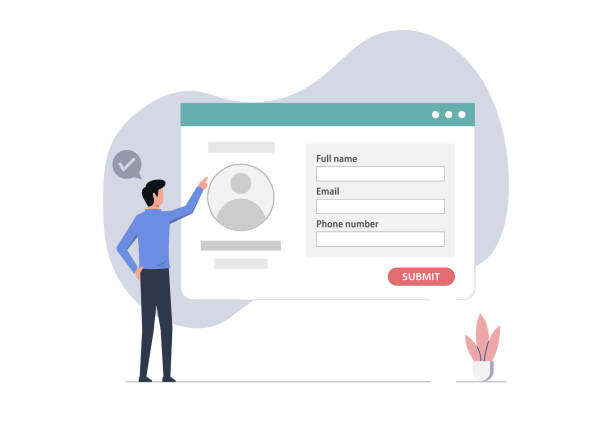
The future of SEO-optimized website design is rapidly evolving, with new trends emerging daily.
With the advancement of Artificial Intelligence (AI) and machine learning, search engine algorithms are becoming smarter and more sophisticated.
This means that simply relying on keywords is no longer enough to rank; search engines are now understanding the meaning and intent behind user queries.
Optimizing for Voice Search is also a trend that needs attention.
With the increasing use of voice assistants like Siri and Google Assistant, the way users search has changed, and search phrases have become longer and more conversational.
This is important news for SEO specialists.
Your content should cover this search style.
Furthermore, the importance of User Experience (UX) and Google’s Core Web Vitals as ranking factors is growing day by day.
This means that website design with an SEO approach must focus more than ever on speed, interactivity, and visual stability.
Interactive and engaging content will also play a more prominent role, as this type of content engages users more and increases their dwell time on the site.
SEO is no longer a separate component but must be integrated into every aspect of SEO-centric site building from the outset.
Web designers and SEO specialists must collaborate closely to create websites that are both aesthetically pleasing and unparalleled in usability, and that shine in search results.
This integrated approach is the key to success in the future digital landscape.
Return on Investment (ROI) of SEO-Optimized Website Design

Many businesses might wonder if investing in SEO-optimized website design is truly worth it. The answer is a resounding yes.
The Return on Investment (ROI) from SEO can be very significant and often surpasses other digital marketing methods.
Organic traffic attracted through SEO has a higher conversion rate because users who reach your site via search are actively looking for the product or service you offer.
This means more targeted and higher-quality traffic, which is more likely to convert into customers.
Compared to paid advertising (PPC), SEO is a long-term investment.
While paid ads stop generating traffic as soon as payments cease, SEO rankings, with proper maintenance, can remain for a long time and continuously attract traffic.
This is a precise analysis of long-term benefits.
SEO-optimized websites have greater credibility and trust in the eyes of users and search engines, which helps with branding and building a loyal customer base.
Furthermore, the Customer Acquisition Cost (CAC) in SEO is often lower than in other marketing channels, as there is no need for direct payment per click or impression.
This means greater efficiency from your marketing budget.
An SEO-optimized website design helps you stand out in the competitive online space and create a sustainable competitive advantage.
Therefore, investing in website optimization for search engines is not just an expense but a strategic investment for the growth and sustainability of your business in the digital world.
Frequently Asked Questions
| Question | Answer |
|---|---|
| What is an SEO-optimized website design? | SEO-optimized website design means creating a website that is not only attractive and user-friendly for visitors but also has its structure and content optimized for search engines (like Google) to achieve a higher ranking in search results. |
| Why is SEO-optimized website design important? | SEO-optimized website design increases your website’s visibility in search engines, attracts more organic (free) traffic, boosts your brand’s credibility and trust, and ultimately leads to increased sales and customers. |
| What are the key factors in SEO-optimized website design? | Key factors include site loading speed, responsiveness (mobile compatibility), proper URL structure, correct use of title and meta description tags, image optimization, high-quality and user-friendly content, and internal and external link-building. |
| What is the role of content in website SEO? | Content is king. High-quality, unique, relevant, and up-to-date content that naturally incorporates target keywords plays a very important role in attracting users and sending positive signals to search engines. |
| What impact does site speed have on SEO? | Site speed is one of Google’s important ranking factors. Slow websites provide a bad user experience and can lead to an increased Bounce Rate, which harms your SEO ranking. |
| What does site responsiveness mean and why is it important for SEO? | Responsiveness means that your website displays correctly on any device (mobile, tablet, laptop). Since most searches are done via mobile, Google prioritizes responsive websites. |
| How do we choose appropriate keywords for a website? | Choosing appropriate keywords is done through research and analysis of user needs and competitors. Using tools like Google Keyword Planner, Ahrefs, or Semrush can help in finding high-volume and relevant keywords. |
| What is the importance of internal and external link-building in SEO? | Internal link-building helps improve site navigation, distribute Page Authority, and aid search engine crawling. External links (backlinks) from reputable sites also signal your site’s authority and expertise to Google. |
| What is the role of User Experience (UX) in SEO? | Good user experience means ease of use, visual appeal, and satisfaction for the user. Good UX encourages users to stay on the site longer and have more interaction, which are considered positive signals for SEO ranking. |
| What tools are available for website SEO analysis? | Numerous tools are available for SEO analysis, including Google Search Console for checking site performance in search, Google Analytics for traffic analysis, GTmetrix and PageSpeed Insights for speed checking, and paid tools like Ahrefs and Semrush for comprehensive SEO and competitor analysis. |
And other advertising services from Rasaweb Advertising Agency
- Smart Conversion Rate Optimization: A dedicated service for online growth based on real data.
- Smart Social Media: A professional solution for increasing click-through rates with a focus on custom programming.
- Smart Marketing Automation: An effective tool for digital branding with the help of real data.
- Smart Marketplace: A dedicated service for growing campaign management based on custom programming.
- Smart Data Analysis: Transform online growth with the help of smart data analysis.
And over a hundred other services in internet advertising, advertising consultation, and organizational solutions
Internet Advertising | Advertising Strategy | Advertorial
Resources
Virgool: Website Design and SEO Articles
ShabakeMa: Website Design Blog
Rastak: Digital Marketing Blog
SEOPars: Specialized SEO Blog
? Transform your business in the digital world with Rasaweb Afarin Digital Marketing Agency. We pave your path to growth and success by providing comprehensive services including SEO, content marketing, and multilingual website design. For a free consultation and to learn more about our solutions, contact us today and shape the bright future of your business.
📍 Tehran, Mirdamad Street, next to Bank Markazi, Kazerun Jonubi Alley, Ramin Alley No. 6

